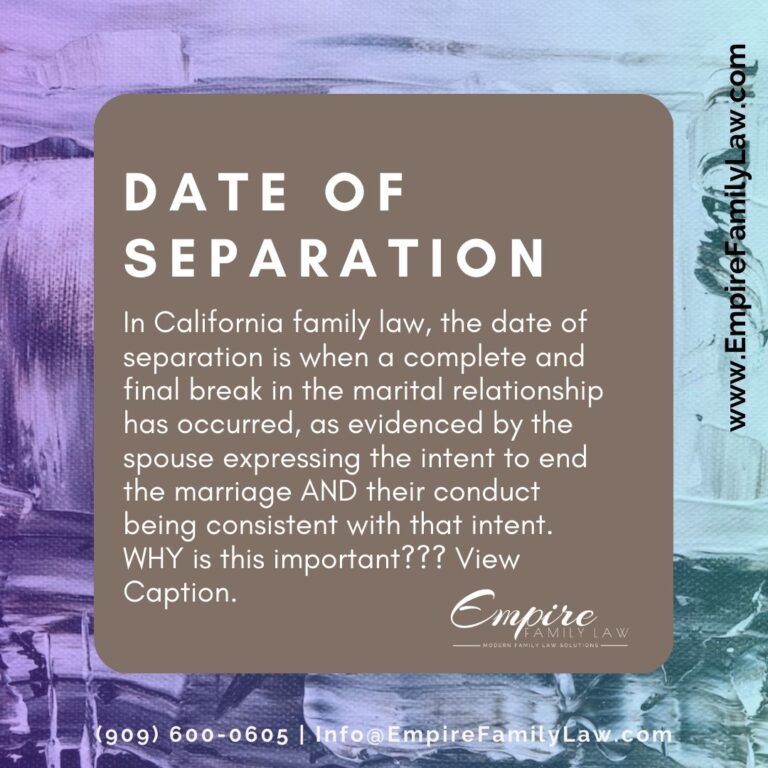
California Divorce Process – Yes, we practice family law, but the truth is…you can file for a divorce (or represent yourself) without hiring an attorney.
I know, crazy coming from an attorney – but the reality is, the necessary divorce forms are available on your Court’s website – and if you wish to navigate the California divorce process on your own, you can.
Do we recommend it? Well, generally the answer is NO! The California divorce process is complicated.
Not only is there a mandatory six month waiting period, but there are tons of forms to be completed, specific timelines to meet, and court procedures to follow – all the while trying to navigate through this process with heightened emotions, fear, anxiety, sadness, and frustration. Let’s not forget to mention the stress of separating your intertwined life from the opposing party.
Nonetheless, below you’ll find a high level summary of the California Divorce Process:
Step 1A) File Petition and Serve the Respondent
Filing for a divorce (or domestic partnership dissolution) begins with the person filing for divorce (referred to as the petitioner) filing a “petition,” which is a fancy word for a legal document notifying the court that you’re ending your marriage. In addition to filing your petition to notify the court, you must serve your spouse to notify them as well.
Note, California is a no-fault divorce state, so you can file for divorce for no other reason than simply “irreconcilable differences.”
Step 1B) Non-Filing Spouse Responds
After the petition has been filed and the non-filing spouse (referred to as the respondent) has been served, they have 30 days to file their “response” indicating whether they object to the requests in the petition, wish for extensions, and/or would like to dismiss and file in another county or state.
Step 2) Temporary Orders Requested
After the petition [and response] has been filed, temporary orders can be requested – enforcing orders until it has been changed by the court or a final order has been issued. These include, but are not limited to orders pertaining to child support, spousal support, child custody, visitation, use of property, and attorney fees.
Step 3) Exchange of Financial Disclosures
The next step, which can be tedious, is to exchange financial disclosures, even if you have agreed to a set if divorce terms. Not only must you complete specific forms, but you must submit your pay stubs, tax returns, bank statements, credit card and mortgage statements – essentially proof of all assets, debts, and property titles.
Step 4) Discovery
Discovery is the process by which one party requests to obtain relevant information and documents from the other party for the case. In Family Court, you have up until 60 days before trial to serve discovery.
Step 5) Settlement
If you and your spouse come to an agreement, then the next step is to settle the case. When you settle a case, then you and your spouse must both agree on all applicable issues, such as child support, spousal support, property division, debt allocation and reimbursement, child custody and visitation rights, as well as attorney fees. So long as an agreement is reached, the settlement will be written and approved by the judge.
Note, California is not only a no-fault divorce state, but it’s a community property state. As a community property state – generally non-gifted/inherited assets and debts acquired during marriage will be divided equally. Although, theoretically this may sound simple, the fact is, it can become quite complicated. Therefore, it is strongly suggested to work with an attorney experienced in property valuation and distribution – as Empire Family Law. If you have any questions, please don’t hesitate to contact us, as we’re here to help you achieve favorable results when it comes to property division.
Step 6) Trial
If an agreement cannot be made, thus a settlement cannot be reached, the next step is to go to trial – and if you’re not working with an attorney at this point, we cannot stress enough the benefits of being represented by an experienced family law attorney at trial – as the California trial system can be tricky and time consuming.
Step 7) Divorce is Final
At the end of trial, you should receive a final judgement with the judge’s signature and a Notice of Entry of Judgment, indicating your divorce is officially final.
What’s the next step???
Step 8) Estate Planning
After you get a divorce, you must update many aspects of your life – including what we strongly suggest – your estate plan. Stay tuned for another blog on the 411s of estate planning.
Until then, know you can get through this. Learn more…
*The steps just mentioned are neither legal advice nor all the steps applicable to your case. Every divorce is different.




